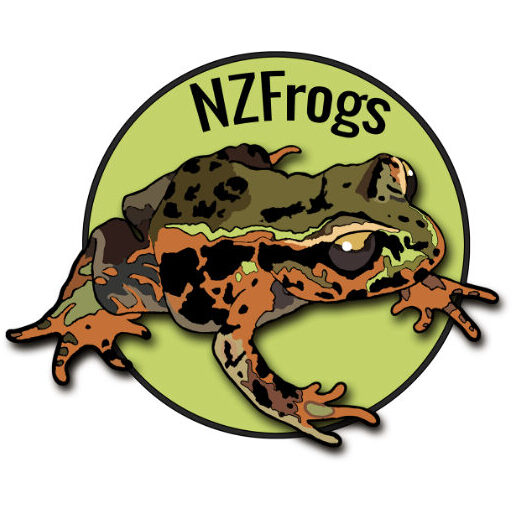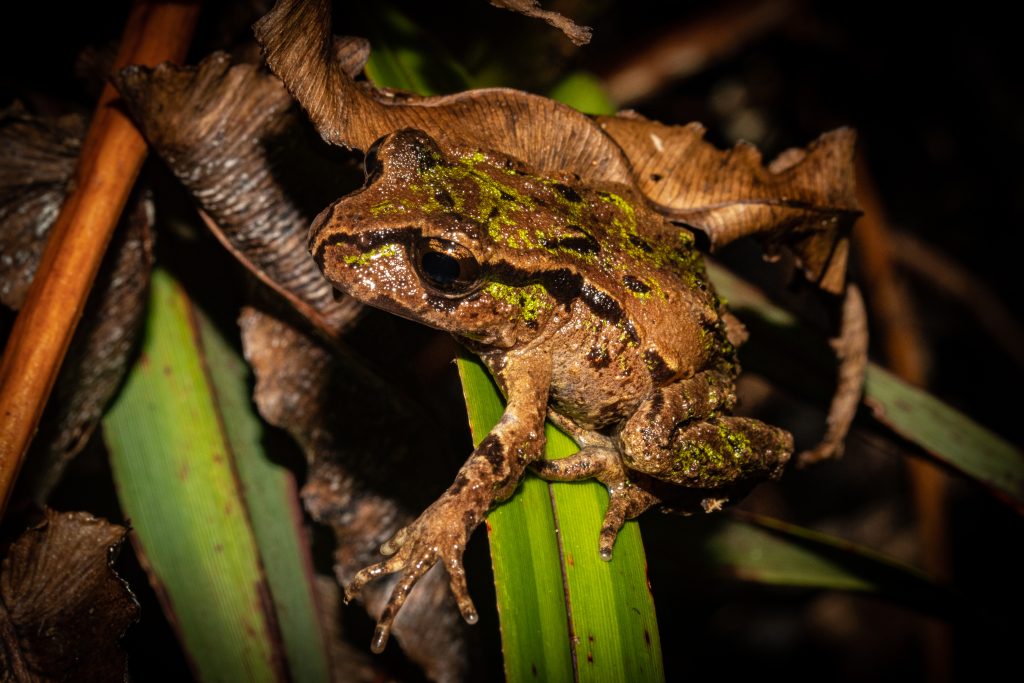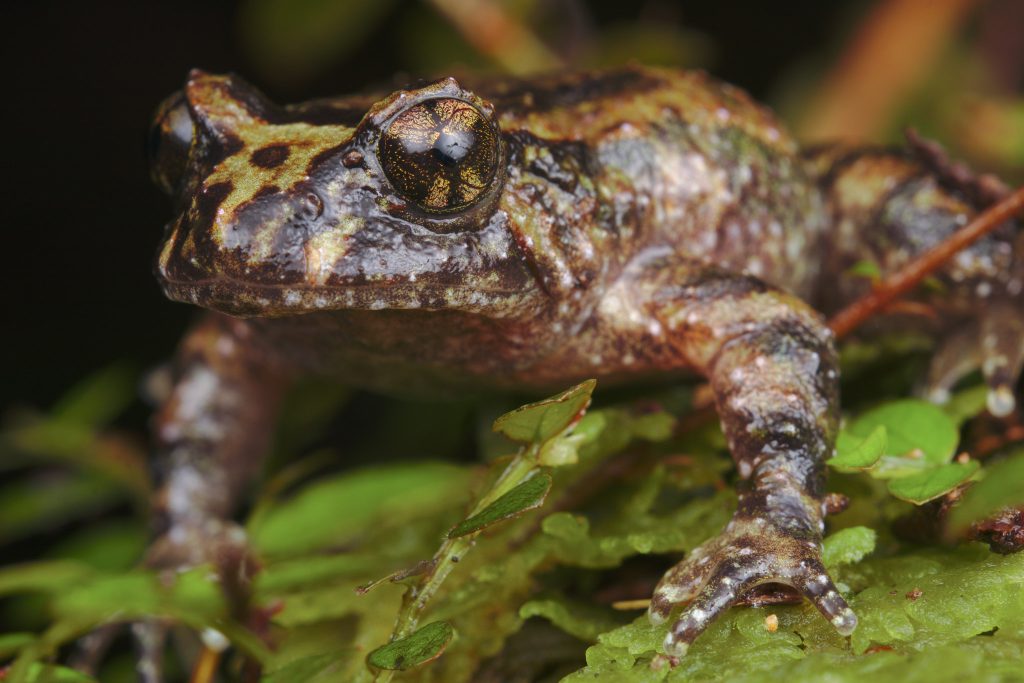
Hamilton’s Frog, Image by ©Oscar Thomas
In New Zealand we have three native frogs that are found nowhere else in the world, which also makes them endemic. There are also three introduced species from Australia, which have naturalised and are more commonly seen. New Zealand’s native frogs are in the genus Leiopelma, an ancient lineage of frogs that split from all other frogs 200 million years ago. Leiopelma are found only in New Zealand and are taonga species called pepeketua or poroka in Māori. There are three species: Archey’s frog (Leiopelma archeyi), Hamilton’s frog (Leiopelma hamiltoni) and Hochstetter’s frog (Leiopelma hochstetteri).
New Zealand Leiopelma frogs exhibit a number of primitive traits that separate them from most other species, including: vestigial tail-wagging muscles, cartilaginous inscriptional ribs, the presence of amphicoelous vertebrae, and nine presacral vertebrae (most frogs have eight). The tailed frogs in the genus Ascaphus from North America, are the only other living frogs known to possess these primitive features. As well as primitive traits, New Zealand Leiopelma differs from other frogs because they lack external eardrums (tympanum), have round pupils and no vocal sac. Leiopelma frogs produce limited vocalisations, there are no mating calls and they only make tiny chirps or yelps when harassed. It is thought that Leiopelma communicate more like salamanders than other frogs, using chemosignals to recognise other individuals.
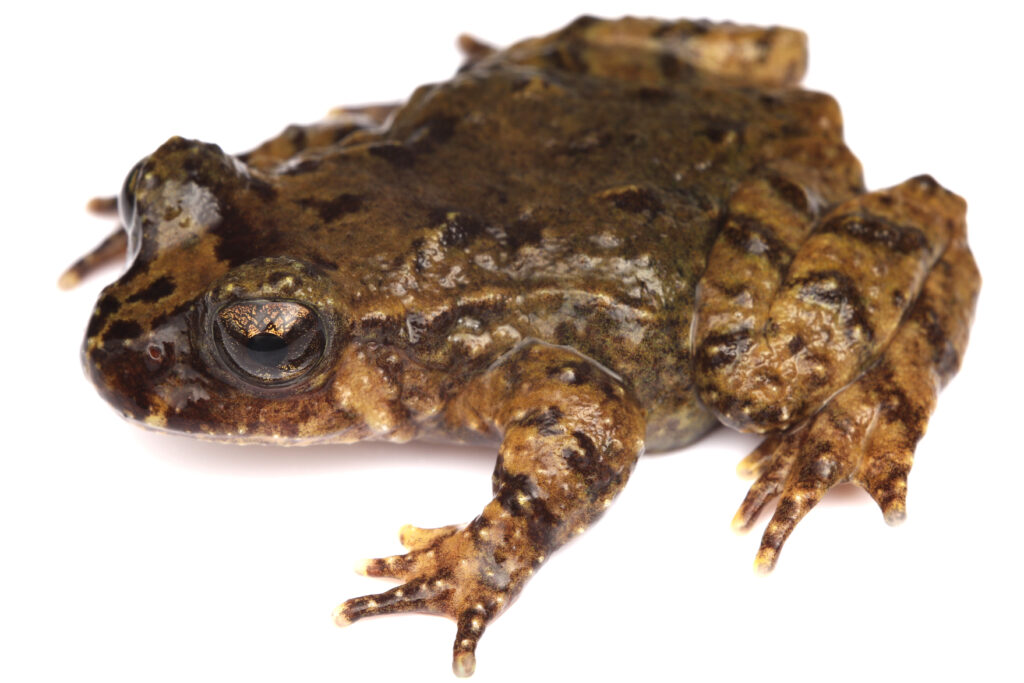
Hochstetter’s Frog, Image by ©Samuel Purdie
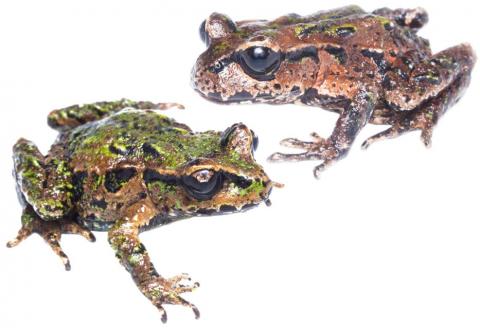
Archey’s Frogs, Image by ©Samuel Purdie
Native New Zealand Leiopelma are severely impacted by habitat loss and introduced predators, especially pigs and rats. Subfossil records indicate there were six species of native frogs in New Zealand when people arrived around 1000 years ago. Three species soon went extinct: Aurora frog (Leiopelma auroraensis), Waitomo frog (Leiopelma waitomoensis) and Markham’s frog (Leiopelma markhami). Natural and translocated populations of Leiopelma are currently restricted to the Central and Northern North Island and a few islands in the Marlborough sounds. There are captive populations around the country at Auckland Zoo, Hamilton Zoo, Zealandia Ecosanctuary and Orana Wildlife Park which have been established to protect these endangered species. All three remaining Leiopelma species are at ‘At Risk’ or ‘Vulnerable’ based on the New Zealand threat classification system. Conservation of our native frogs is managed by the Department of Conservation Native Frog Recovery Group who work closely with tangata whenua and researchers to improve conservation best practice.
Living Species
All three remaining Leiopelma species at ‘At risk- Declining’ or ‘Vulnerable’ based on the New Zealand threat classification system.
Extinct Species
Our native frogs have an extensive subfossil record which indicates that much of Leiopelma diversity was lost soon after the arrival of humans approximately 1000 years ago. Upon human arrival there were at least six species of Leiopelma frogs widespread across New Zealand. However, extensive habitat loss and the introduction of invasive mammalian predators decimated endemic frog populations. The three largest native frogs have become extinct leaving only three surviving species: Archey’s, Hamilton’s and Hochstetter’s frogs.
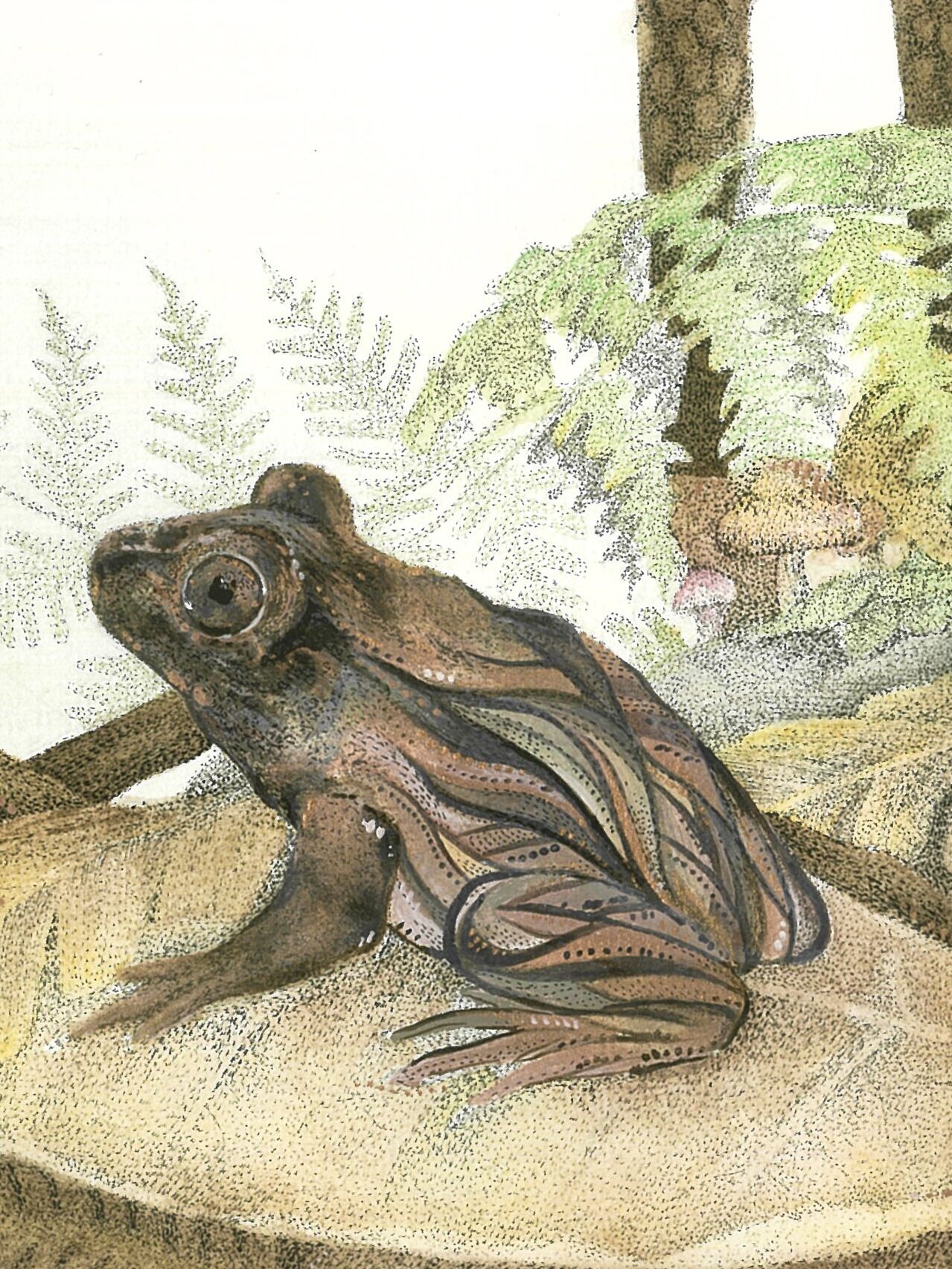
Aurora frog Art by ©Kelly Body
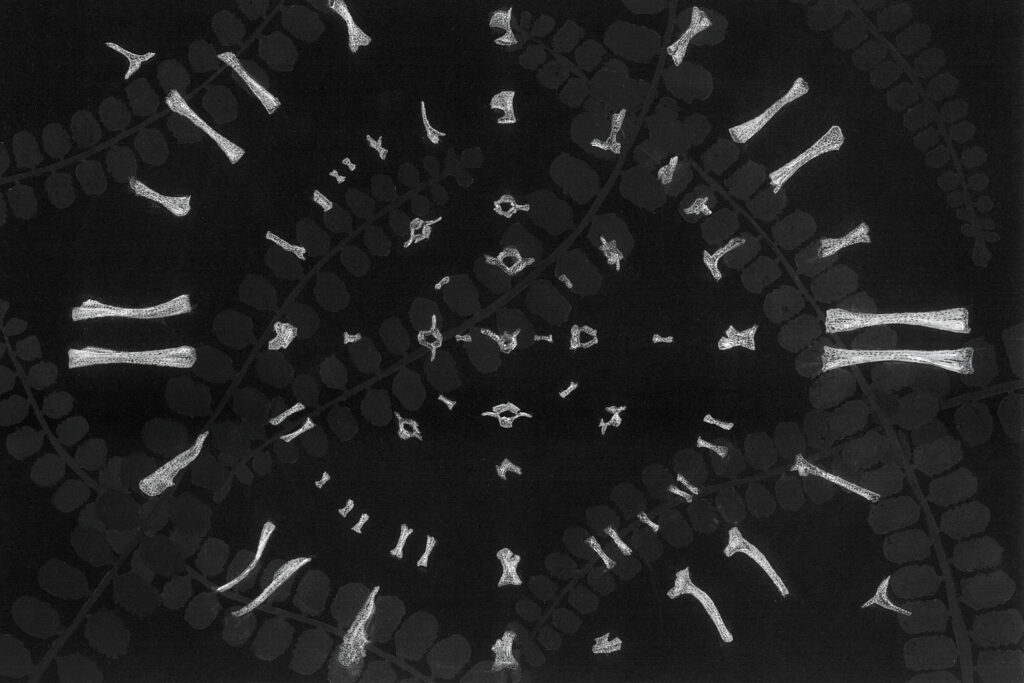
Waitomo frog bones Art by ©Kelly Body
Recently Extinct Species
Markham’s Frog
Markham’s frog was the most widespread of all Leiopelma and may have still persisted when the first European explorers arrived in New Zealand. It had a distribution across all New Zealand with subfossils from Otangaroa in Northland to Te Anau in Southland. Similar to Archey’s or Hamilton’s frog, Markham’s frog was a walking frog and a poor jumper. Most Markham’s frog subfossils are found in pitfall deposits indicating that it preferred terrestrial habitat, likely in mature native forest. Markham’s frog had a snout to vent length (SVL) between 50-60 mm.
Art by ©Tony Jewell
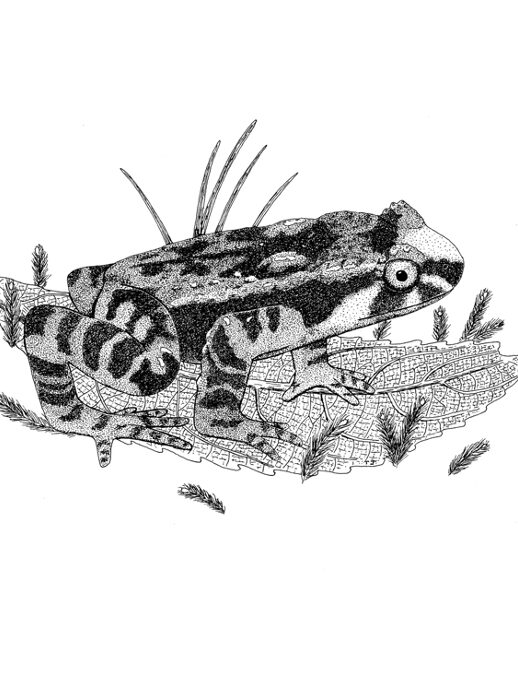
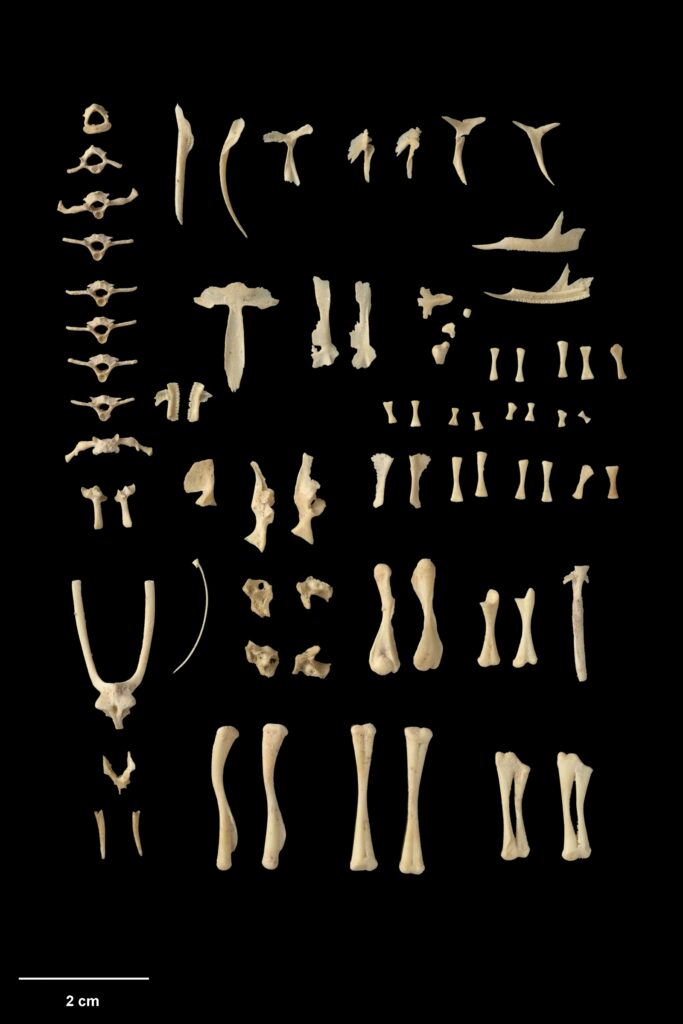
Markham’s Frog, Leiopelma markhami Worthy, 1987, collected 18 May 1985, Honeycomb Hill Cave, New Zealand. Field Collection 1982-1988. CC BY 4.0. Te Papa (S.023120)
Aurora Frog
Aurora frog is thought to be a derivative of Markham’s frog, restricted to the Southern South Island including Fiordland. To this day the Aurora frog is known from only a single specimen discovered in Aurora Cave, Te Anau. Similar to Markham’s frog, Aurora frog was a terrestrial, walking species and a poor jumper. However, it was slightly larger than Markham’s frog with a snout to vent length (SVL) of around 60 mm.
Art by ©Tony Jewell
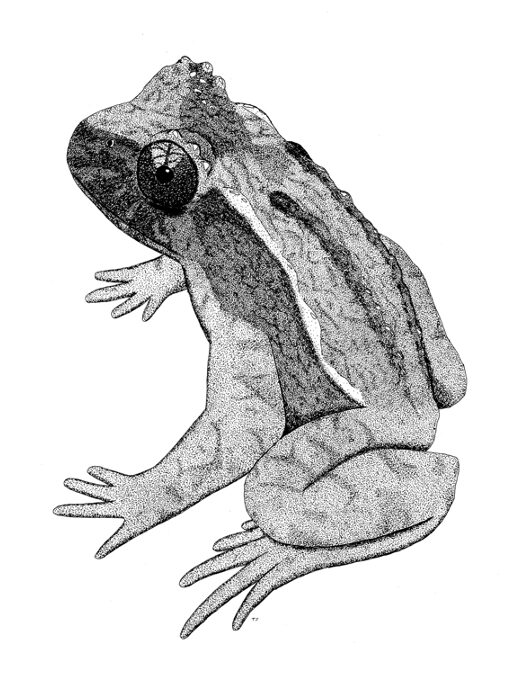
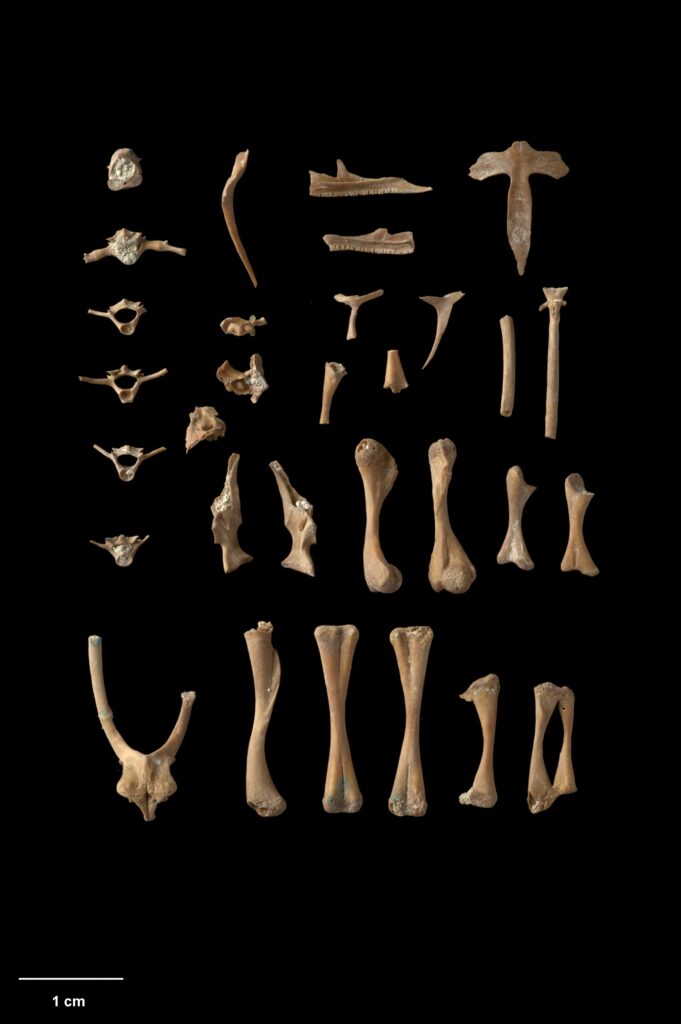
Aurora Frog, Leiopelma auroraensis Worthy, 1987, collected February 1984, Aurora Cave Te Anau, New Zealand. CC BY 4.0. Te Papa (S.023413)
Waitomo Frog
Waitomo frog was the largest native frog with a snout to vent length (SVL) of 100 mm. It had a widespread distribution in the North Island with subfossils from Otangaroa in Northland to Martinborough in the Wairarapa. Their osteology (the structure of their bones) suggests that, among all Leiopelma, Waitomo frog was an exceptionally strong jumper. Most Waitomo frog subfossils are found in stream wash deposits which suggests that it was an aquatic or semi-aquatic species.
Art by ©Tony Jewell
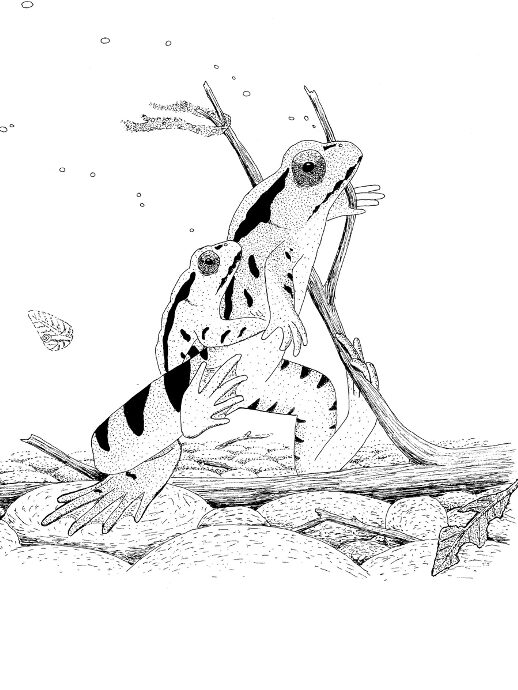
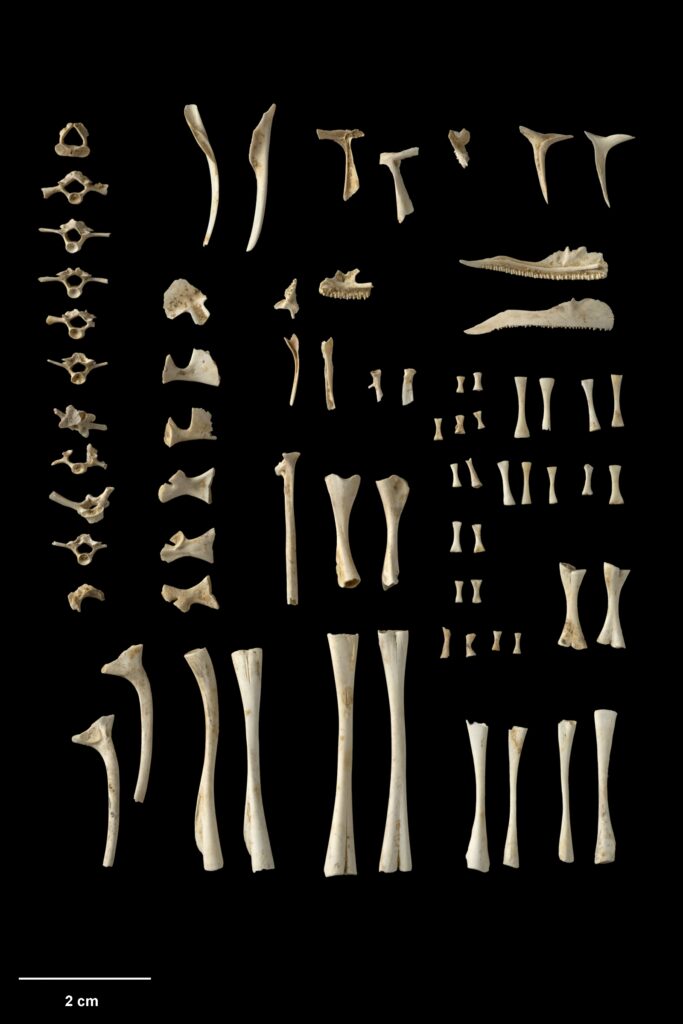
Waitomo Frog, Leiopelma waitomoensis Worthy, 1987, collected March 1984, Haggas Hole Waitomo, New Zealand. CC BY 4.0. Te Papa (S.023415)
Prehistoric Extinctions
The native frog genus Leiopelma is a unique, evolutionarily distinct lineage. Leiopelma split from all other frogs around 200 million years ago in the early Jurassic Period. The Leiopelma lineage has probably survived here, in what is now New Zealand, since the Jurassic Period. Primitive frogs were widespread on the ancient supercontinent of Pangea. They likely diverged as Pangea slowly split with extinctions leaving only Leiopelma and its North American relative Ascaphus to survive. However, scientists are still unsure about how Leiopelma arrived in New Zealand because of a poor fossil record. Only three fossil species are known, all from relatively recent deposits in New Zealand. The three species likely went extinct after the uplift of the Southern Alps increased the aridity of the South Island’s east coasts.
Leiopelma miocaenale
Leiopelma miocaenale was discovered in the deposits at St Bathans, Central Otago and lived around 16 to 19 million years ago. Leiopelma miocaenale is named after the geological time period in which it lived, the Miocene (a geological period spanning from 23 to 5 million years ago). Of all living frogs it is most closely related to Hochstetter’s frog.
Leiopelma acricarina
Leiopelma acricarina also lived around 16 to 19 million years ago and was discovered at St Bathans which is New Zealand’s most significant terrestrial fossil deposit. Leiopelma acricarina is named after the sharp ‘carina neuralis’ which differentiates it from other Leiopelma species. It is not closely related to any living Leiopelma frogs.
Leiopelma bishopi
Leiopelma bishopi (Bishop’s frog) was discovered along the banks of the Waipara River, Canterbury in the Kowai formation. Bishop’s frog lived in the late Pliocene 3.4 to 2.7 million years ago. Bishop’s frog was named after the Emeritus Professor Phil Bishop to recognise his services to amphibian conservation. Bishop’s frog is most closely related to Hochstetter’s frog of all living frogs.
Living Species References
Bishop, P. J., Daglish, L. A., Haigh, A., Marshall, L. J., Tocher, M., & McKenzie, K. L. (2013). Native frog (Leiopelma spp.) recovery plan, 2013-2018. Wellington: Publishing Team, Department of Conservation.
Burns, R. J., Bell, B. D., Haigh, A., Bishop, P. J., Easton, L., Wren, S., … & Makan, T. (2018). Conservation status of New Zealand amphibians, 2017. Wellington: Publishing Team, Department of Conservation.
Cisternas Tirapegui, J. (2019). Translocation management of Leiopelma archeyi (Amphibia, Anura: Leiopelmatidae) in the King country (Doctoral dissertation, University of Otago).
Green, D. M., & Cannatella, D. C. (1993). Phylogenetic significance of the amphicoelous frogs, Ascaphidae and Leiopelmatidae. Ethology Ecology & Evolution, 5(2), 233-245.
Green, D. M. (1988). Antipredator behaviour and skin glands in the New Zealand native frogs, genus Leiopelma. New Zealand journal of zoology, 15(1), 39-45.
Lee, J. S., & Waldman, B. (2002). Communication by fecal chemosignals in an archaic frog, Leiopelma hamiltoni. Copeia, 2002(3), 679-686.
Waldman, B. (2016). Chemical communication in archaic New Zealand frogs. In Chemical Signals in Vertebrates 13 (pp. 351-360). Cham: Springer International Publishing.
Worthy, T. H. (1987). Osteology of Leiopelma (Amphibia: Leiopelmatidae) and descriptions of three new subfossil Leiopelma species. Journal of the Royal Society of New Zealand, 17(3), 201-251.
Worthy, T. H., Tennyson, A. J., Scofield, R. P., & Hand, S. J. (2013). Early Miocene fossil frogs (Anura: Leiopelmatidae) from New Zealand. Journal of the Royal Society of New Zealand, 43(4), 211-230.
Extinct Species References
Easton, L. J., Tennyson, A. J., & Rawlence, N. J. (2022). A new species of Leiopelma frog (Amphibia: Anura: Leiopelmatidae) from the late Pliocene of New Zealand. New Zealand Journal of Zoology, 49(3), 215-224.
Feng, Y. J., Blackburn, D. C., Liang, D., Hillis, D. M., Wake, D. B., Cannatella, D. C., & Zhang, P. (2017). Phylogenomics reveals rapid, simultaneous diversification of three major clades of Gondwanan frogs at the Cretaceous–Paleogene boundary. Proceedings of the national Academy of Sciences, 114(29), E5864-E5870.
Irisarri, I., San Mauro, D., Green, D. M., & Zardoya, R. (2010). The complete mitochondrial genome of the relict frog Leiopelma archeyi: insights into the root of the frog Tree of Life. Mitochondrial DNA, 21(5), 173-182.
Roelants, K., & Bossuyt, F. (2005). Archaeobatrachian paraphyly and Pangaean diversification of crown-group frogs. Systematic Biology, 54(1), 111-126.
Worthy, T. H. (1987). Palaeoecological information concerning members of the frog genus Leiopelma: Leiopelmatidae in New Zealand. Journal of the Royal Society of New Zealand, 17(4), 409-420.
Worthy, T. H. (1987). Osteology of Leiopelma (Amphibia: Leiopelmatidae) and descriptions of three new subfossil Leiopelma species. Journal of the Royal Society of New Zealand, 17(3), 201-251.
Worthy, T. H., Tennyson, A. J., Scofield, R. P., & Hand, S. J. (2013). Early Miocene fossil frogs (Anura: Leiopelmatidae) from New Zealand. Journal of the Royal Society of New Zealand, 43(4), 211-230.
